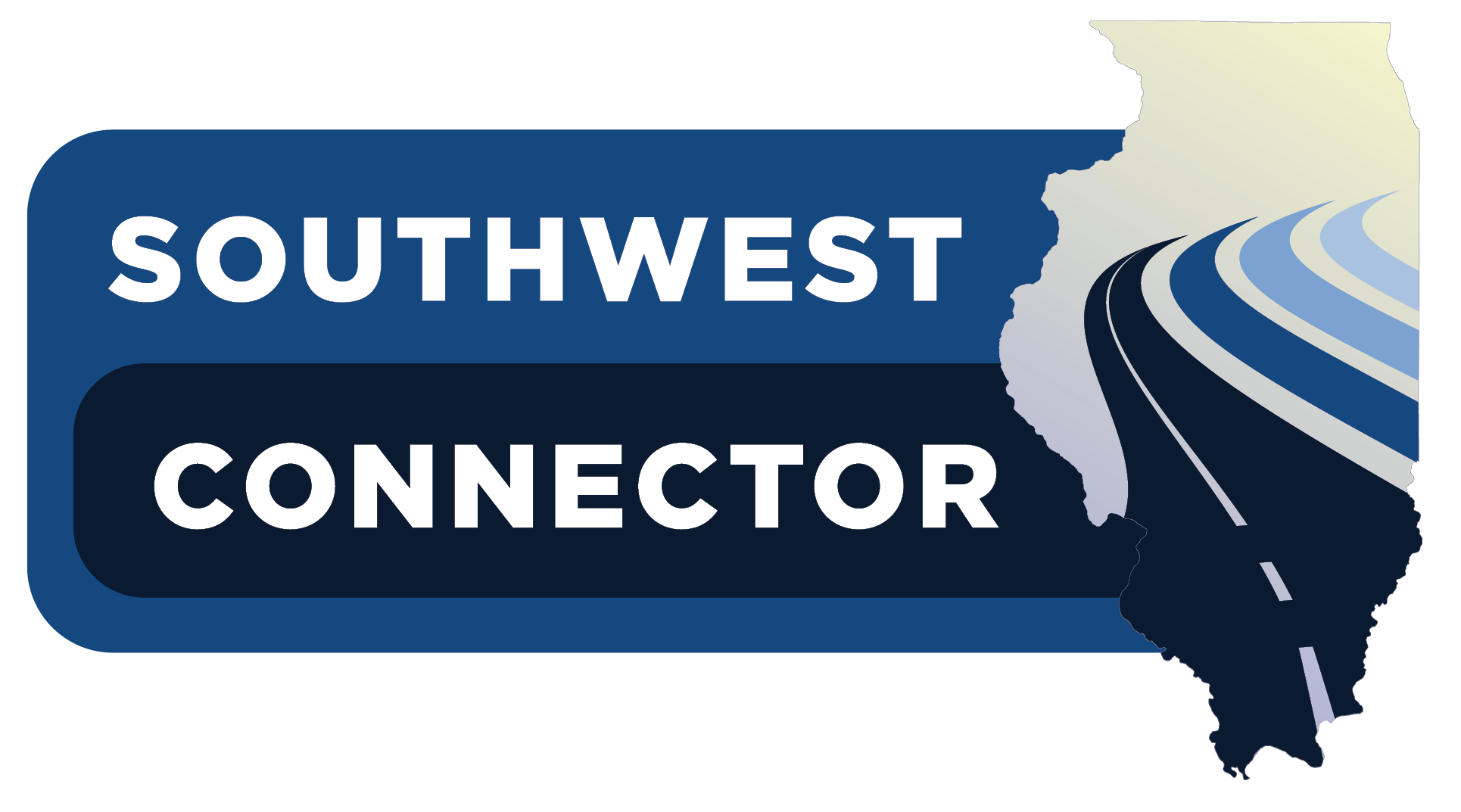Frequently Asked Questions
The Southwest Connector Planning and Environmental Linkages (PEL) Study is a collaborative, integrated approach to transportation decision-making that will identify improvements to reduce travel times, improve safety, and enhance connectivity along Illinois 3, Illinois 154, and Illinois 13/127 from the City of Waterloo to the City of Murphysboro.
The current route within the study area has safety concerns and deficiencies that negatively impact freight traffic and increase travel times for motorists traveling between communities in Monroe, Randolph, Perry, and Jackson counties. Safe and efficient highway infrastructure in the study area would support economic development, job growth, property values, tourism and access to education, healthcare, recreation, and other amenities. The PEL study will identify transportation solutions to improve safety, reduce travel times, and enhance connectivity in the area.
Planning and Environmental Linkages (PEL) is a Federal Highway Administration (FHWA) initiative to link the transportation planning process with the National Environmental Policy Act (NEPA) process. Transportation agencies can use the FHWA PEL process to conduct a “PEL study,” which is a transportation planning study conducted at the corridor or subarea level; that considers environmental, community, and economic goals early in the planning stage and carries them through project development, design, and construction.
The goals of a PEL study are to: 1) consider environmental, community, and economic goals early in the transportation planning process, and 2) use the information, analysis, and products developed during planning to inform and streamline the transportation project development and environmental review process. The PEL process uses an integrated approach and is intended to provide the framework for the long-term implementation of transportation improvements as funding becomes available.
IDOT will offer a self-paced, virtual public information as well as two hybrid (virtual and in-person) open-house style public information meetings during the study. Links to the virtual public information meeting and community events will be available on the “Get Involved” page of this website. Dates, times, and locations for in-person public information meetings will be posted on this website, advertised in local newspapers, and shared on social media. Comments and questions may be sent to the Study Team on the “Contact” page on this website or by email at contact@southwestconnector.com.
The study is anticipated to be completed in late 2027.
The Study Team is collecting data on environmental resources, safety, traffic, travel patterns, and roadway and bridge deficiencies within the study area.
Information gained through the previous studies will be considered provided the recommendations are still in line with the current purpose and need.
The “no build” traffic volumes are developed using an average expected growth rate based on IDOT’s statewide travel demand model and planned and approved developments in the area.
IDOT will use the PEL study to identify “early action” projects, independent projects that could be implemented quickly–perhaps even before the study is finalized–with limited costs and impacts. Additionally, IDOT will determine logical project phases for larger investments that could be moved forward into the federal environmental review process (NEPA) based on current and future funding availability, potentially accelerating project delivery and minimizing overall costs. Projects forwarded into NEPA may include short-term (3-5 years), medium-term (5-10 years), and long-term (10-15 years) projects.
The PEL study process is expected to identify and screen a broad range of improvement concepts, or possible solutions, that can be carried forward into the National Environmental Policy Act (NEPA) phase. While a single project is a possible solution, the PEL study will likely recommend multiple solutions to be implemented as a phased series of improvements.
The PEL study will look at potential improvements within the right-of-way as well as potential improvements that may require right-of-way expansion. When we begin evaluating improvement concepts, we will conduct a high-level scan of potential impacts related to right-of-way expansion. However, there is always a preference to be able to achieve what we can within the existing right-of-way. Detailed property impacts would be evaluated during the next phase of any potential projects as part of the National Environmental Policy Act (NEPA) process.
The study is funded with approximately $3 million in federal funding and $3 million in state funding.
At this point, we are too early in the process to pair available funding to potential projects.
